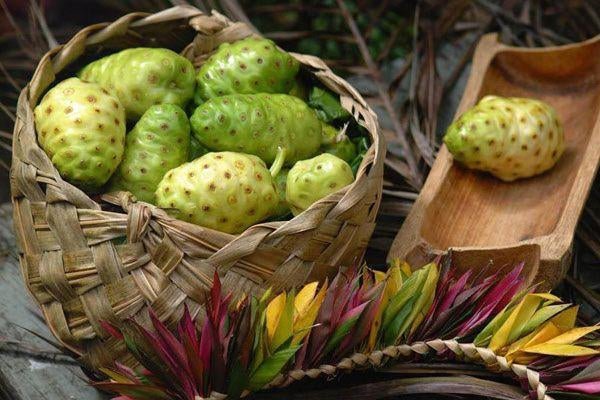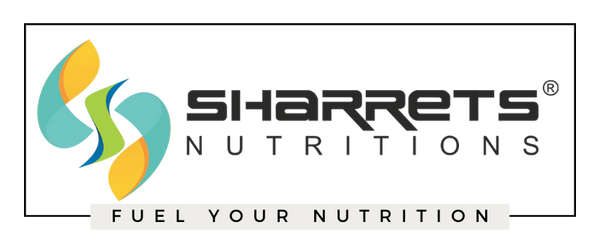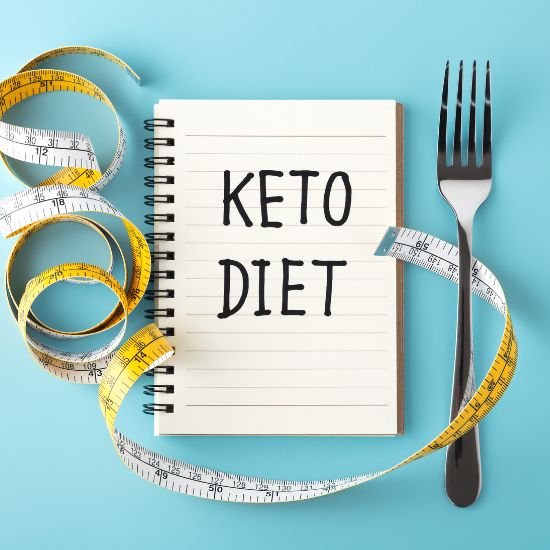
You should know about Chemistry & Nutritional facts of Noni
Share
This Article provides Chemical constituents of Noni & Nutrition facts of Noni : noni juice nutritional information.
Noni Products .
- 100% Noni fruit juice,
- Noni fruit powder.
- and Noni leaf powder.
By “nutrition facts” we mean the chemical elements and vitamins commonly found on grocery product nutrition labels and which are commonly of interest to consumers and heath care professionals.
Many other chemical compounds that are found in Noni are also covered. This information is provided as a reference source that health professionals and consumers can use to assess nutritional issues related to Noni.
Noni as a nutritional supplement:
Most plant-based supplements such as Noni are sold as nutritional supplements in order to comply with government labeling regulations, even though many people consume Noni for the medicinal benefits they believe it has.
Noni is sold in the U.S. and New Zealand as a nutritional supplement, In India as a Dietary /Food supplement , in the EU as a novel food (recently introduced food), and in Australia as a food. In other words, Noni is marketed in many places as a nutritional supplement without making explicit claims of any medicinal value.
The nutrition data presented here are representative for their respective products. Variation in data is expected between different sources of noni products.
Like many other products labeled as nutritional supplements, Noni has modest nutritional value.
As shown in Table 2.1, Noni juice is roughly comparable to Apple juice in its nutritional analysis, although it is somewhat lower in calories.
People normally do not consume noni or similar herbal supplements to satisfy their basic dietary requirements (vitamins,minerals, calories, etc.), but rather to provide their bodies with chemistry they think might help ward off or heal infections and diseases.
Table 2.1. Comparison of basic nutritional aspects of Noni juice and Apple juice.
| Per 31 g.(about 1 Fl Oz.) |
| Noni Juice | Apple Juice | |
| Calories | 4.8 (20.3 kJ) | 15 (63.4 kJ) |
| Calories from fat | 0 | 0 |
| Total fats (g) | <0.1 | 0.3 |
| Cholesterol (mg) | N/A | N/A |
| Sodium (mg) | 3.3 | 1 |
| Total carbohydrate (g) | 1.0 | 3.6 |
| Dietary fiber (g) | <0.2 | ~ |
| Protein (g) | 0.13 | 0.02 |
| Vitamin A (IU) | <3 | ~ |
| Vitamin C (mg) | 10.4 | 12.9 |
| Calcium (mg) | 3 | 2 |
| Retinol (IU) | <5 | ~ |
Noni juice - A complete nutritional analysis of Pure noni juice (Table 2.2) reveals that it is a fairly good source of vitamin C and other antioxidants (see this Article’s “Chemical constituents” section).
Like some other fruit juices, Noni is relatively high in potassium (K), as shown in Table 2.3. Potassium is associated with many health benefits, and noni is a good source of the essential mineral potassium. Potassium promotes healthy heart rhythm, muscular contraction, nerve function, energy production, and fluid balance.
Insufficient potassium is associated with fatigue, muscle weakness and spasm, and insomnia.
According to the Food and Nutrition Board of the Institute of Medicine of the National Academies, adults should consume at least 4.7 grams of potassium per day to lower blood pressure, minimize the effects of salt, and reduce the risk of kidney stones and bone loss.
However, most American women 31–50 years old consume less than half of the recommended amount of potassium, and men’s intake is only moderately higher. Incorporation of noni in one’s diet could help correct this deficiency. People with renal problems need to be aware of their potassium intake from all foods and supplements, including noni.
Noni juice is low in protein, calories, and fat, and has no cholesterol. Aged juice is usually very acidic, about as acidic as lemon juice. It provides trace amounts of many elements.
Table 2.2. Nutritional analysis of 100% Noni Juice - noni juice nutritional information :
| Noni juice nutrition facts | Per 100 ml (3.4 oz) |
| Dry matter | 7.6g. |
| Water | 94.8g. |
| Fat | <0.1 g |
| Total protein | 0.5 g |
| Ash | 0.4 g |
| Total dietary fiber | 0.6 g |
| Sucrose | 1.3 g |
| Glucose | 1.5 g |
| Fructose | 1.5 g |
| Carbohydrates | 6.0 g |
| Noni juice Calories | 27 (113 kJ) |
| Sodium (Na) | 9 mg |
| Potassium (K) | 150 mg |
| Calcium (Ca) | 6 mg |
| Magnesium (Mg) | 11 mg |
| Iron (Fe) | 0.4 mg |
| Phosphorous (P) | 10 mg. |
| Chloride (Cl) | 62 mg |
| Vitamin B1 | 0.006 mg |
| Vitamin B2 | 0.035 mg |
| Vitamin B6 | <0.05 mg |
| Vitamin B12 | 70 mcg. |
| Panthothenic acid | 0.169 mg |
| Niacin | 0.194 mg |
| Biotin | 4.07 mcg. |
| Folic acid | 11.4 mcg. |
| Ascorbic acid | 53.2 mg |
| Vitamin E (total) | 0.05 mg |
| Beta-carotene | <0.0005 mg |
| Total carotene | 0.0035 mg |
| Acidity | pH 3.43 |
noni juice nutrition label
Table 2.3. Potassium content comparison for various fruit juices.
| Per 6 fl oz (177 ml) serving |
| Potassium (mg) |
| Prune juice | 530 |
| Orange juice 354 | 354 |
| Tomato juice | 400 |
| Noni juice | 390-555 |
Noni fruit powder -
Noni fruit powder is usually sold in capsules or sometimes in bulk form for reconstituting as juice or for mixing in other products. Noni fruit powder is consumed directly or mixed into a beverage. Encapsulated noni fruit powder is widely available and usually sold as a nutritional supplement.
One type of noni fruit powder is made from the whole fruit, including the seeds, usually by sun-drying (the fresh fruit is sliced and placed on wire mesh to dry in the sun). Another type of noni fruit powder is made from seed-free noni juice or noni pulp, by low-heat dehydration, or freeze drying.
The drying ratio of seedless fruit pulp to dried powder is about 26 to 1. For powder made from the whole fruit, including the seeds, the ratio is about 9 to 1. This means that seed-free powder is about three times more concentrated than whole fruit powder containing seeds.
Based on research at Southern Cross University in Australia, 30 ml (about 1 oz) of pure noni juice was roughly equivalent to 3 grams of whole fruit powder with seeds, and 1 gram of seedfree powder. This has implications for the encapsulated noni market, which to date has not stated the equivalency conversion between juice and powder servings.
For noni capsules (whole fruit with seeds) that contain 500 mg, the recommended serving or dosage is 6 Capsules / day. For seed-free capsules, the recommended serving is about 2 capsules/ day.
This is based on the industry standard recommendation of 1 oz (about 30 ml) of pure noni juice per day, although this standard is apparently not based on any published evidence in the scientific literature and should be taken as a guideline only.
In addition to encapsulated forms, fruit powders are used to make reconstituted noni juice products as well as some cosmetics such as bar soap. They are also used to make tea.
Noni fruit powder can be a source of selenium and manganese and provides some zinc and boron.
Analysis of dried fruit reveals mainly carbohydrate (71%) of which about half is dietary fiber (36%). However, a serving (1500 mg) makes up less than 1% of the recommended daily intake of carbohydrates and fiber.
Noni fruit powder has very few calories (only 3/ serving) and is a relatively good source of vitamin C.
Noni leaf powder
Leaf powder is used in teas or made into encapsulated nutritional supplements.
In Korea the powder of the leaves of Noni , mixed with Garlic powder and made into pills referred to as “healthy kidney” pills. Noni leaves are a good source of calcium.
Drug interactions and contraindications :
Health care professionals and consumers want to know if a nutritional supplement poses any risk of interference with their existing drug or food therapies. No negative drug interactions or contraindications have been reported for noni. If potassium should be restricted in your diet, please consult a physician about using noni.
Consumption guidelines of Noni
The consensus recommendation for noni juice among health practitioners and consumers is 1–2 fl oz (30–60 ml) per day for the average person in good health and up to 6 fl oz (180 ml) or more per day for people with a disease such as cancer. Equivalency between juice, whole powder, seedfree powder, and fresh fruit is roughly as follows.
1 fl oz (30 ml) juice ≈ 3 g whole fruit powder (orsix 500 mg capsules) ≈ 1 g seed-free powder (ortwo 500 mg capsules) ≈ 2 oz (60 g) fresh fruit, or about two large bites.
Regulatory and consumer protection
It is worth noting that the USFDA / FSSAI does not recognize the medicinal applications of Noni (or those of many other traditional medicinal plants). Therefore, the product must be sold only as a nutritional supplement without making any health claims. The FDA /FSSAI actively enforces its regulations against companies who make claims about the medicinal applications of noni in advertising or product information.
Noni products sold in EU countries are subject to EU rules and regulations. Noni juice is permitted to be sold in EU countries as a novel food.
Nutrition summary (noni juice nutrition)
Noni is a nutritionally valuable fruit that is probably safe for most people to consume in moderate quantities. Noni juice is similar to apple juice in many basic nutritional values, except that it has fewer calories and is usually more acidic. Noni has good antioxidant levels that are similar to green tea. Potassium levels in noni juice are similar to other juices such as prune, tomato, and orange; people with renal problems should consult their physician regarding potassium intake from such juices.
Chemical constituents of Noni
The health benefits of consuming certain fruits and vegetables have been known for centuries. Epidemiological studies of the 20th century clearly demonstrated
that eating certain plants or plant-based foods protects against several chronic disease conditions, such as cardiovascular disease and cancer.
For example, people who consume nutrient-rich foods and get enough vitamins and minerals from their diet reduce their risk of common illnesses such as cancer, heart disease, and osteoporosis. Noni, like all plants, is a living biochemical factory.
Noni produces many biologically active & chemical compounds , which are very useful. The list of chemical components found in noni grows longer each year as researchers refine their focus and characterize new molecules.
Some of the discoveries have revealed significant medically active compounds. To date, the major groups of chemical constituents of most significance in noni are the complex polysaccharides, anthraquinones, glycosides, and triterpenoids.
Here is a summary description of the most important, interesting, or medically promising chemical constituents that have been discovered in the noni plant, and how they may apply to human health. The descriptions of the chemical constituents are listed in alphabetical order in Table 2.5 below.
Table 2.5. Some of the most useful, interesting, or promising chemical constituents of noni. Constituents are identified as specific molecules or compounds and/or as chemical groups.
Anthraquinones ( damnacanthal , morenone 1 and 2 several others)Antibacterial, anti-viral, type I collagen synthesis, cholesterol reduction,
triglyceride reduction, anti-tumor, analgesic, sedative.
Glycosides, Glucosides (flavonol glycosides, iridoid glycosides, lipid glycosides)
Asperuloside citrifolinin A and B)
Anti-cancer, anti-tumor
Lignans/Neolignans ( americanin A morindolin, others)
Antioxidant, arteriosclerosis
Polysaccharides
Immuno-modulatory, anti-cancer, anti-tumor
Sterols ( sitosterol)
Needed for steroid hormone production
Scopoletin
Hypertensive, anti-bacterial and anti-fungal; anti-inflammatory; analgesic; histamine-inhibiting; arthritic conditions; allergies; sleep disorders; migraine headaches; depression; Alzheimer’s disease
Triterpenoids ( ursolic acid)
Anti-tumor (skin cancer), hepatoprotective, anti-inflammatory (oral and topical), anti-ulcer, antimicrobial, anti-hyperlipidemic, anti-viral
Other Fatty Acids ( caproic/caprylic acid , ricinoleic acid)
Impart odor to noni , “castor oil acid” obtained from castor bean plant is used in soaps and textile finishing
Morindin, Morindone (yellowish dyes)
Alizarin (red dye)
1 These are examples only, many other chemical constituents exist.
2 Many medical authorities do not currently recognize medical applications for chemistry isolated from or attributed to noni.
Alkaloids
Alkaloids are a group of nitrogen-containing bases which have a pharmacological effect on people or animals. Many of them are drugs, the most well known being caffeine, nicotine, and cocaine. Some alkaloids reported to be found in noni but disputed by others,remain enigmatic and require further research. Xeronine is an alkaloid that has been hypothesized to be found in noni, but its existence is questioned by many scientists.
Anthraquinones
Anthraquinones are an important group of phytochemicals found in noni. These are quinines occurring as glycosides in plants (see “Glycosides and glucosides”
below). Anthraquinones are often colored and may be useful as dyes, including alizarin, morindin, and morindone. The basic chemical structure of anthraquinones is C14H8O2. Several potentially very beneficial anthraquinones are found in noni leaves, fruits, cell suspensions, and noni roots. Damnacanthal is one of the most important anthraquinones in noni, and a number of promising new anthraquinones have been discovered recently. Anthraquinones have promise in cancer treatment. The EU regards two anthraquinones present in noni leaves, morindin and rubiadin, as toxic. All noni products are screened for these compounds in the EU. To be safe, noni leaves should be consumed in small quantities or avoided.
Damnacanthal
First found in noni roots, damnacanthal is an orange- yellow solid with chemical formula C16H10O5.Research on damnacanthal derived from noni has demonstrated cancer prevention (inhibition of lung carcinoma in mice), sedative effect in animal studies, and treatment against the malaria parasite.
Glycosides and glucosides
Noni contains a number of useful glycosides that have promise in cancer prevention. A glycoside is any compound that contains a sugar molecule (carbohydrate) that is convertible by hydrolysis into a sugar and a non-sugar component. These molecules are found in noni leaves, cell suspensions, and fruits. Important examples from noni include flavonol and iridoid glycosides, citrifolinoside, asperuloside, and citrifolinin A and B, scopoletin, and anthraquinones. The anti-cancer medical properties of glycosides from noni include free radical scavenging activity and inhibition of UVB-induced Activator Protein-1 activity in cell cultures.
Lignans and neolignans
These comprise a large group of natural products found in plants that are produced by the coupling of two C6C3 units. Noni fruits have a number of them. Lignans are very potent antioxidants. They are found in other useful and healthful plant products such as flax seed oil. These potent antioxidants work throughout the human body to scavenge free radicals, which can damage tissue (and are thought to play a role in the pathology of many diseases). The neolignan americanin A found in noni fruits is one of noni’s most potent antioxidants. Others such as morindolin are newly discovered and require further study.
Polysaccharides
The unique polysaccharides found in noni appear to boost the mammalian immune system to provide cancer prevention or amelioration. A polysaccharide is a polymer that is made up of many hexose or pentose units. Common polysaccharides in plants include cellulose, pectin, and starches. They are sometimes referred to as long-chain sugars and they are found in ripe noni fruit and noni fruit juice. Noni contains novel as well as common polysaccharides. The novel polysaccharides in noni are sometimes referred to as complex polysaccharides. Interesting or useful polysaccharides in noni include glucuronic acid, galactose,arabinose, rhamose, glycosides, and a trisaccharide fatty acid ester. There are several others not yet fully characterized or named and considered to be novel or unique to noni and which have potential anti-cancer or immuno-modulatory activity. Based on experiments on mice, these complex polysaccharides are immuno-stimulatory, immuno-modulatory, anti-bacterial, anti-tumor, and anti-cancer.
Sterols
Sterols are a group among the steroids. They are lipids that are resistant to saponification and are found in all animal and vegetal tissues. Sitosterol is a group of sterols that occur in high concentrations in certain plants, such as yam, and are used in the synthesis of steroid hormones.
Scopoletin
Scopoletin (C10H8O4) has potentially wide medical applications. Scopoletin is a coumarin found in ripe noni fruit and fruit juice. It is known to regulate blood pressure through dilation of the vasculature. Scopoletin is also anti-bacterial, anti-fungal, antiinflammatory, analgesic, histamine-inhibiting, and useful for arthritic conditions, allergies, sleep disorders, migraine headaches, depression, and Alzheimer’s disease. Research at the University of Hawai‘i recently confirmed that after ingesting noni, scopoletin levels in the human bloodstream increased measurably. Scopoletin regulates the hormone serotonin, which helps to reduce anxiety and depression. It also has anti-inflammatory activity and can be used to treat bronchial illnesses and asthma. Other sources include passionflower and stevia.
Triterpenoids
Triterpenoids are terpenoids having a C30 skeleton. They produce a large group of natural substances which includes steroids and consequently sterols.
Ursolic acid
Ursolic acid naturally occurs in a large number of medicinal herbs , vegetarian foods, & plants. Ursolic acid has been found to be medicinally active both internally and topically . Urosolic acid’s anti-tumor (skin cancer) , anti-inflammatory, and antimicrobial properties make it useful in many cosmetic applications.
Dyes
Noni was once used extensively to produce yellow and red dyes for tapa cloth. A dye is a colored substance, often obtained from plants, that has an affinity to the substrate to which it is applied. Alizarin is a red dye is found in noni root bark and noni heartwood. Alizarin is one of the most stable natural pigments. In 1868, a synthetic method for making alizarin was discovered.
The ancient Hawaiian and Polynesians used dyes from the noni plant to color tapa cloth, a traditional bark cloth from Polynesia characterized by simple geometric patterns.
Morindin and morindone are yellowish-red pigments. The dye is extracted as the glucoside morindin and produces the dye (morindone) upon hydrolysis. Morindin and morindone are found mainly in noni root bark, while morindone is also found in noni heartwood. Like alizarin, morindin and morindone are anthraquinones. These substances are known to be antibacterial.
Click here to buy best Noni Juice in India.
Noni fruit juice in India I noni juice nutrition ,noni juice nutrition facts,noni juice nutrition label,noni juice nutritional information,noni juice nutritional value,noni juice calories,noni fruit juice nutrition, tahitian noni juice nutrition facts , best noni juice in India
















